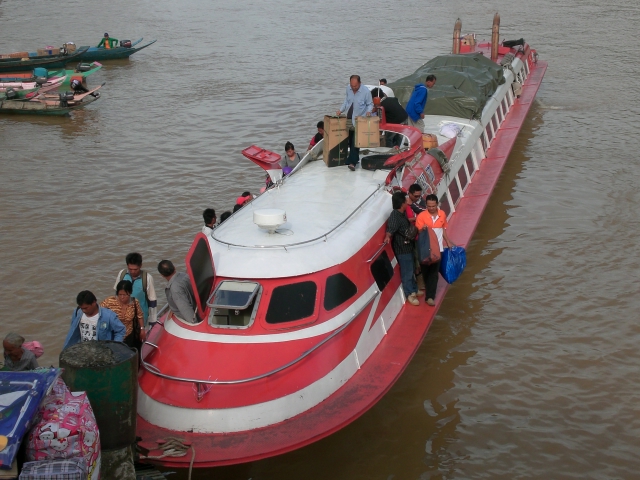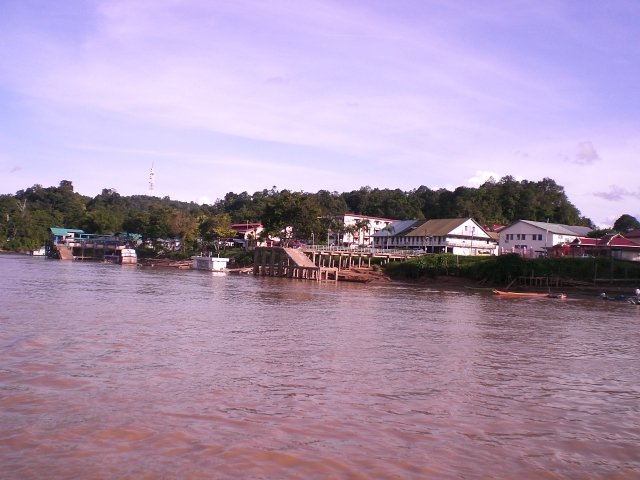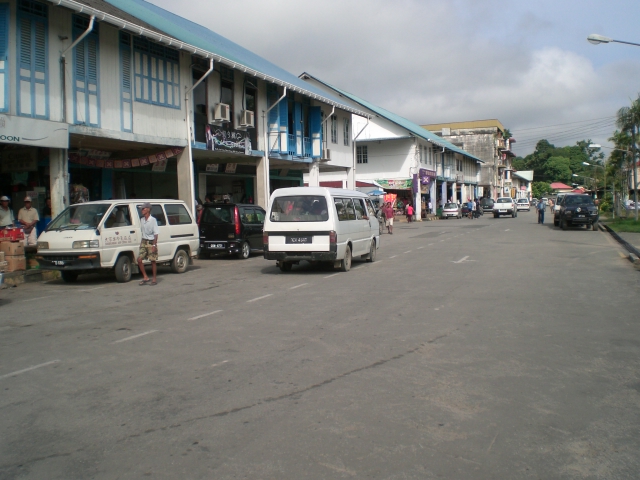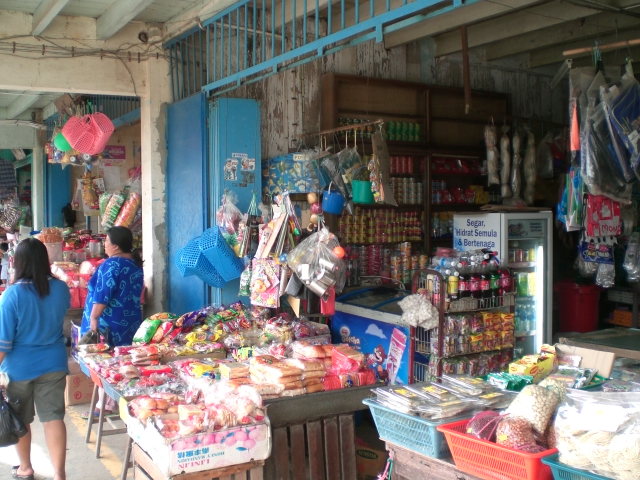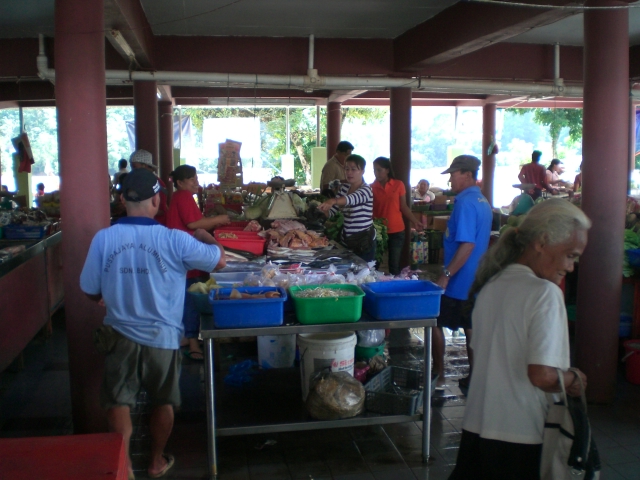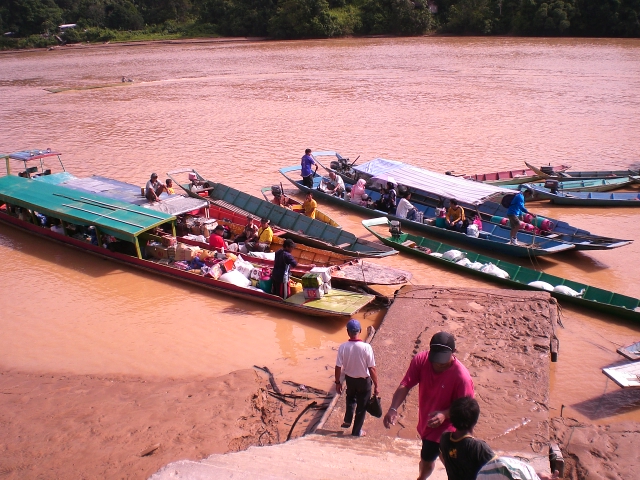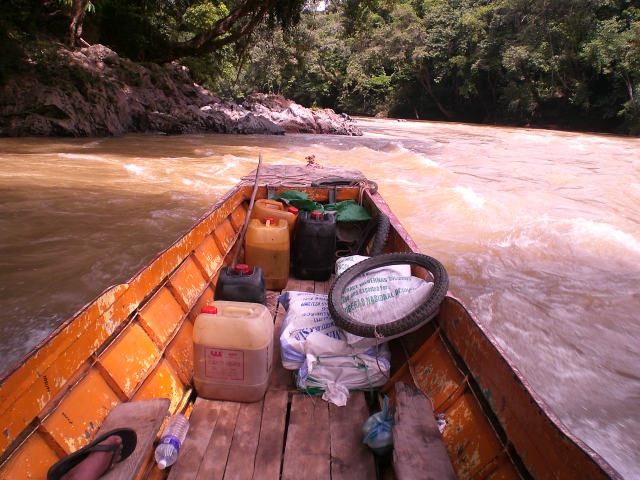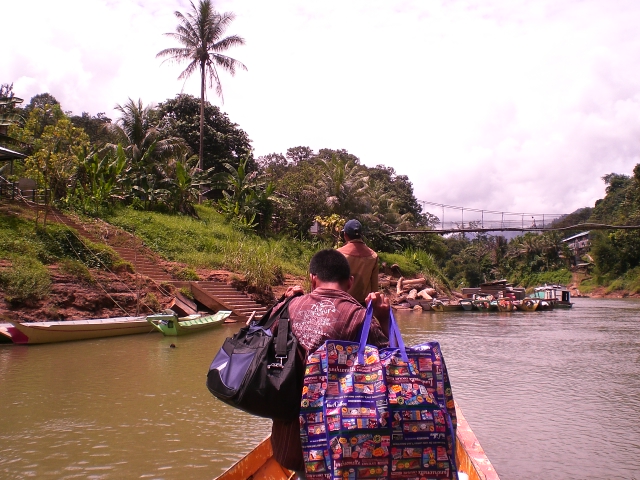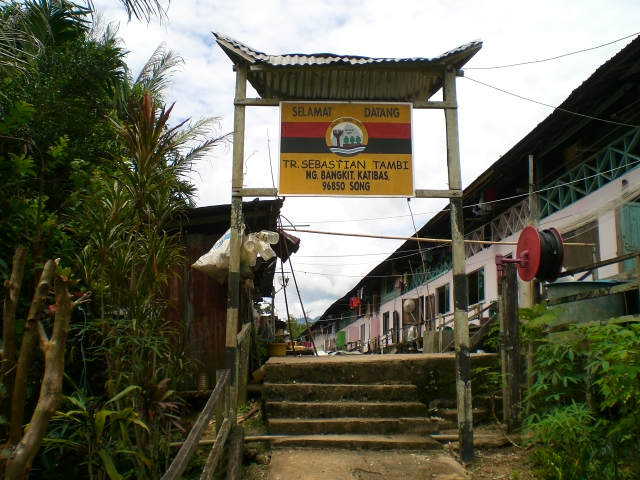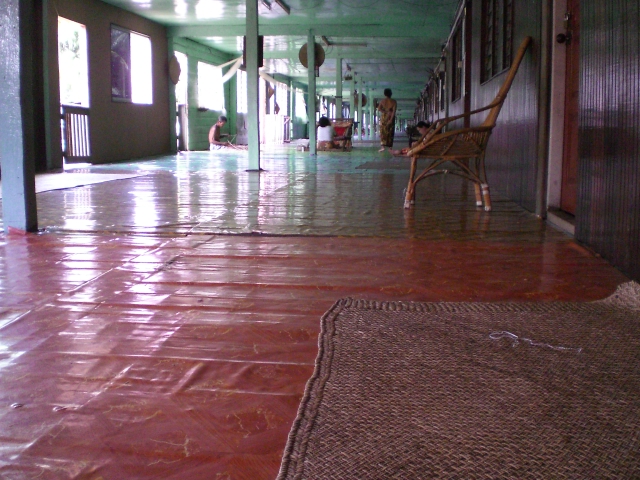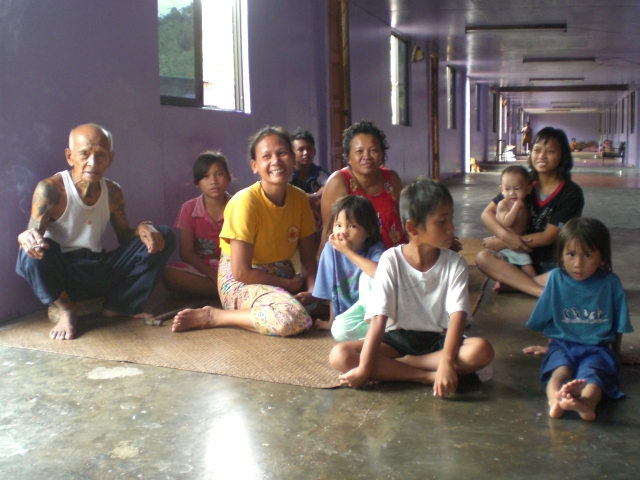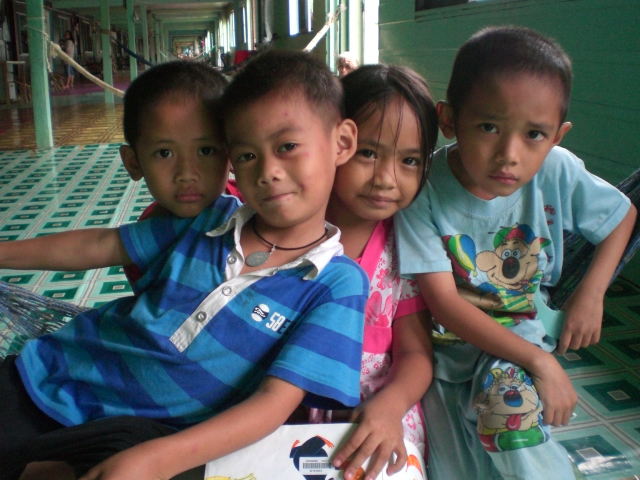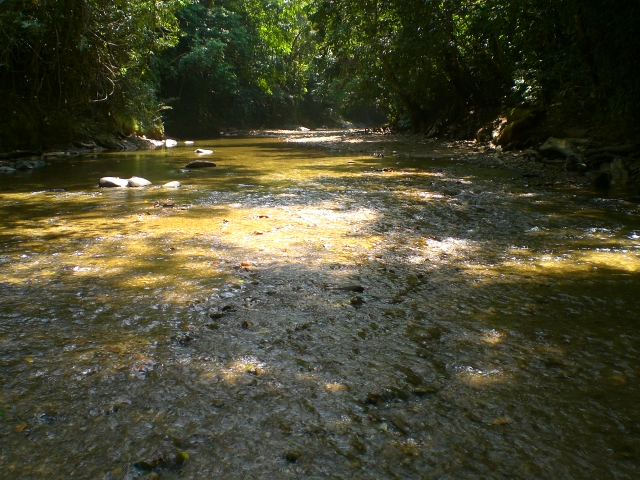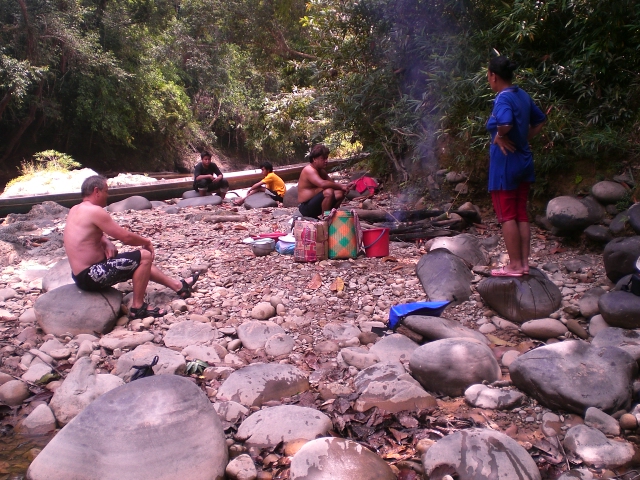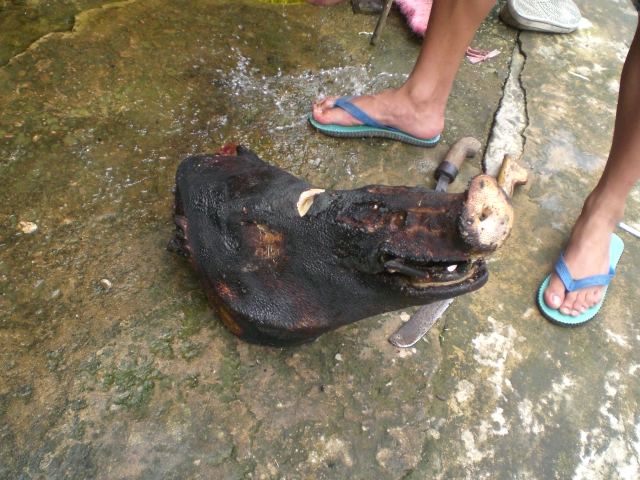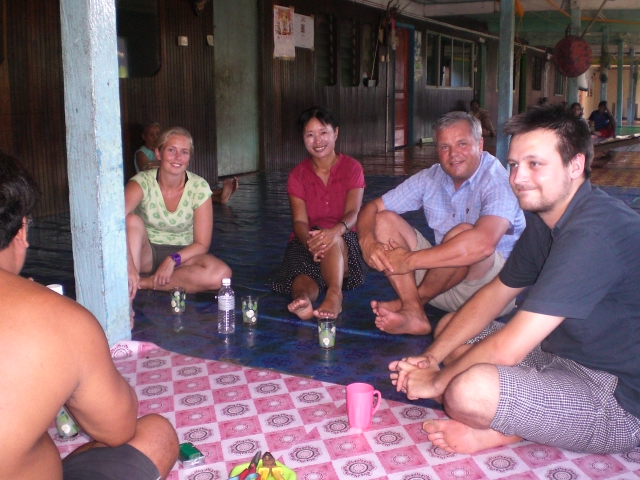Although this journey is by no means a tough safari “into the unknown”, a trip up this wild and beautiful tributary of the mighty Rejang River of central Sarawak can legitimate your claim of having really “done Borneo”.
The Katibas is located in Central Sarawak and pours its waters through 200 km of deep tropical rainforest, soft muddy banks, rocky outcrops, rapids and countless pebbles and sand bars. It is in the middle of a territory peopled by the Iban, a fabled tribe of Borneo whose most notorious claim to fame is a history of head-hunting during warfare by their forefathers less than a century ago.
It is this proud tribe, who live in their famous longhouses along the banks of the many rivers that is the object of fascination for so many foreign travelers to Sarawak. Their communal lifestyle of a “whole village living under one roof” has not changed for generations and provides a fascinating glimpse into the social fabric of a rural and agrarian community still clinging to this existence in a modern and changing world.
The trip begins in the bustling riverine town of Sibu, on the bank of the longest and largest river of Malaysia, the Batang Rejang (Batang means large river). Here, passengers get on river express boats that somewhat look like strickened jetliners floating on water without the wings, for a two and half hours ride upriver to a small but picturesque town called Song.
Those familiar with Sarawak’s history will know that for exactly a hundred years before 1941, the state was a private domain of an Englishman James Brooke and his two successors, who called themselves the White Rajahs, whose history spawned the kind of romance from which the likes of Somerset Maugham, Joseph Conrad, Rudyard Kipling drew inspirations.
Song was an important and strategic outpost built by the White Rajahs to guard the rich hinterland of the Katibas River region and to keep the various warring tribes under check, but its development had been static since then and except for a few rows of shophouses, remained essentially a small trading town for its Iban hinterland, which arguably is not actually a sad ending, as it retains a charming character that can showcase the wild side of old Sarawak in all its glory.
Walking past Song’s main street is to witness a kaleideiscope of typical small towns that dot this vast state. Here, the rural folks congregate from upcountry and down rivers to trade their agrarian commodities like rubber, pepper, rice, oil palm and game for all their modern “necessities” like canned food, electronic appliances, clothings, fuel (for chainsaws, generators and outboard engines), and return to their respective longhouses by the ubiquitous outboard powered longboats.
The wet market is a bustling place where in-situ chopped-up carcasses of wild boars, deers, river turtles, civet cats, all manners of river fishes are displayed and sold. Colourful local fruits and vegetables line the stalls as vendors and buyers, both a multicultural mix of Chinese, Malays and the predominant Iban, haggle over prices.
Though Song is not exactly a one-horse town, picking up a chat with the shopkeepers, hoteliers, coffee shop waiters, market vendors and even total strangers is like getting to know the bartender of an English pub, albeit after the initial “shock” of a close encounter. A westerner walking Song’s sidewalk is like the proverbial Cossack stomping into a Wild West’s cowboy saloon.
Song has three hotels, scores of sundry shops that seem to cater exclusively to Iban clienteles, and the ever-popular coffee shops, where over a cuppa and a plate of fried noodle, a patron can sit the whole morning chatting with friends. Song is the epitome of life in the slow lane where everybody stops to smell the roses! Some of these kopitiams serve surprisingly good fares and missing these watering holes is like going to an English countryside without entering a pub.
The trip up the Katibas begins at the Song’s wharf front. The atmosphere here is filled with the buzz of outboard engines of the longboats as they arrive and depart, with the upcountry passengers embarking and disembarking with their burden. A ride on the open deck longboat is one of the highlight of this trip. As the longboat roars off, the cool morning air blowing into your face and the mist covered hills beyond the river, the feeling is one of exhilaration.
On both sides of the cream-coffee coloured river are thick jungle lining the river banks. The flow of water gradually becomes swifter and rocks begins to protrude from the middle of the river. Depending on the time of the year, dry season may render the river too shallow for boats and in monsoon seasons the rushing water may make it dangerous to navigate. Before long the longboats will have to negotiate in zig-zag fashion to avoid them and the occasional rapids that appear. Mild adrenaline rush is guaranteed for first timers here!
It is a two hours’ ride to reach Rumah Sebastian, an Iban longhouse on a smaller tributary of the Katibas, the Sungei Bangkit. The longhouse is basically a structure of an elongated house built mostly of wood and bamboo. (Imagine the longhouse as a horizontal condominium in which there is a common area running the length of the building) They are named after the headman, thus Rumah Sebastian literally means Sebastian’s longhouse. This is a 37-door longhouse built on the top of a sloping river bank usually above the high water level mark to avoid flooding when the area is deluged with heavy rain during monsoon season.
Ascending the earthen steps is like climbing a flight of a 3-4 storey building and couch potatos may need to catch a breath halfway. For first timer, arrival at the longhouse is a climax of sort. Here you are, in the midst of a Borneo jungle among former headhunter tribe and stepping into the sanctum of their legendary abode.
The longhouse dwellers usually receive their guests on the ruai, the long covered corridor running the length of the longhouse. As a custom, the first house visitors should visit is the headman’s bilik or “apartment”, unless he or she has prior invitation from other household. The ruai is also the communal area where everyone is allowed to sit and chat and socialize with each other. There are usually no chairs and guests are expected to sit cross legs on the matted floor.
Often visitors will be offered a tumbler of tuak, or the Iban sweet rice wine, as a sign of welcome, this is a usually a precursor to a get-to-know-you session with the host. Do not be surprise to see your audience swell to a crowd of a dozen of curious elderly men and women and children, sitting nearby and participating in your conversation uninvited.
The bilik or apartment unit of the longhouse, usually consists of the main sitting or living room on entering the unit’s front door. This is where the television (yes, and it’s satellite-linked!), if the owner can afford, is placed. The kitchen and dining room is usually at the rear, and in between, the sleeping area, which is sometimes not partitioned. There is the loft, or upstair, which may also be used as sleeping area and store. There is usually an opening on the roof, the air well, to let in sunlight into the dark interior.
Rumah Sebastian is beside the Sungai Bangkit, a smaller tributary of the Katibas River, and a side trip up stream is an interesting way to see even more remote longhouses. About one hour upstream, the longboat has to negotiate a series of challenging rapids amidst picturesque boulder and pebble strewn river banks. The stony banks or karangan is an ideal place to cook lunch especially using the abundantly available bamboo stems as the cooking “pots” and plenty of drift wood for feeding the fire. Under the cool shade of a jungle canopy, a picnic is the most unforgettable part of this trip. After the meal, a relaxing dip in the cold crystal clear stream is the perfect way to spend a whole day.
Dinner in the longhouse can be quite daunting for visitors who do not have adventurous culinary tastes. This is because some items in the menu is like right out of Fear Factor’s script. A sampling:-
Chopped python cubes soup
Soy sauce wild boar meat
Stewed river turtle innards
Chicken cooked in bamboo tube
Stir-fry tapioca leaves with anchovies
Blanched jungle fern with shrimp paste
And many more along that genre.
Evening after dinner is usually a time to sit on the floor of the ruai and over glasses of tuak, langkau (native moonshine) and air ijok (an alcoholic sap extracted from a palm tree), sometimes even into the wee hours if the chemistry between the visitors and the longhouse folks is right. They say alcohol can break down barriers and inhibitions, this is very true in the longhouse especially during the Gawai, the Iban’s harvest festival, where all-night celebration and noisy merry making and laughter fill the entire longhouse. Many visitors end up “adopted sons or daughters” of the headman or the elderly for the night.
Part of the joy of traveling is to hear native speaker speaks their own language among the Iban language is a high pitch, often excitable exchanges with a lot of peaks and lows sometimes coupled with looks of mocked exasperation. A sure-fire way to endear yourself to the host is to speak his language, a smattering of poorly pronounced words is often a great ice breaker and an occasion for laughter.
Although the experience of visiting and sleeping in an Iban longhouse in the middle of Borneo’ jungle cannot rank shoulder to shoulder with an African safari, or a mountain trek up Mt. Everest, it is nevertheless a profound eye-opener and many have vowed to return to this Borneo, the Stealer of Heart.
